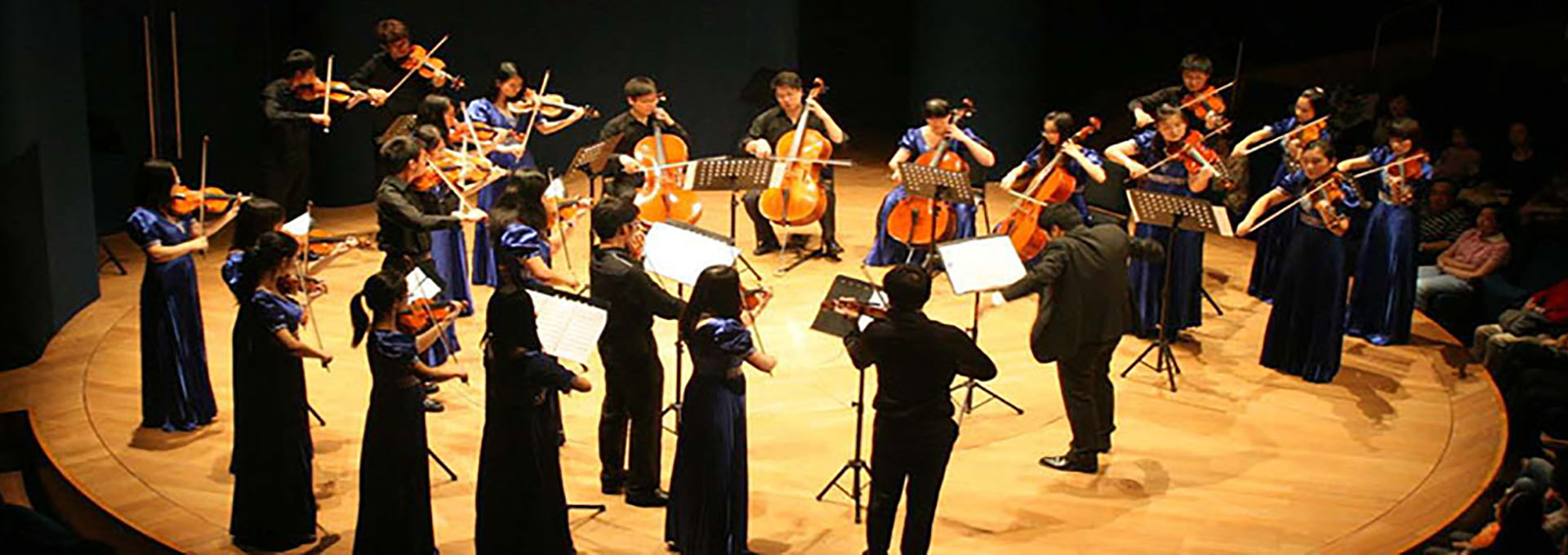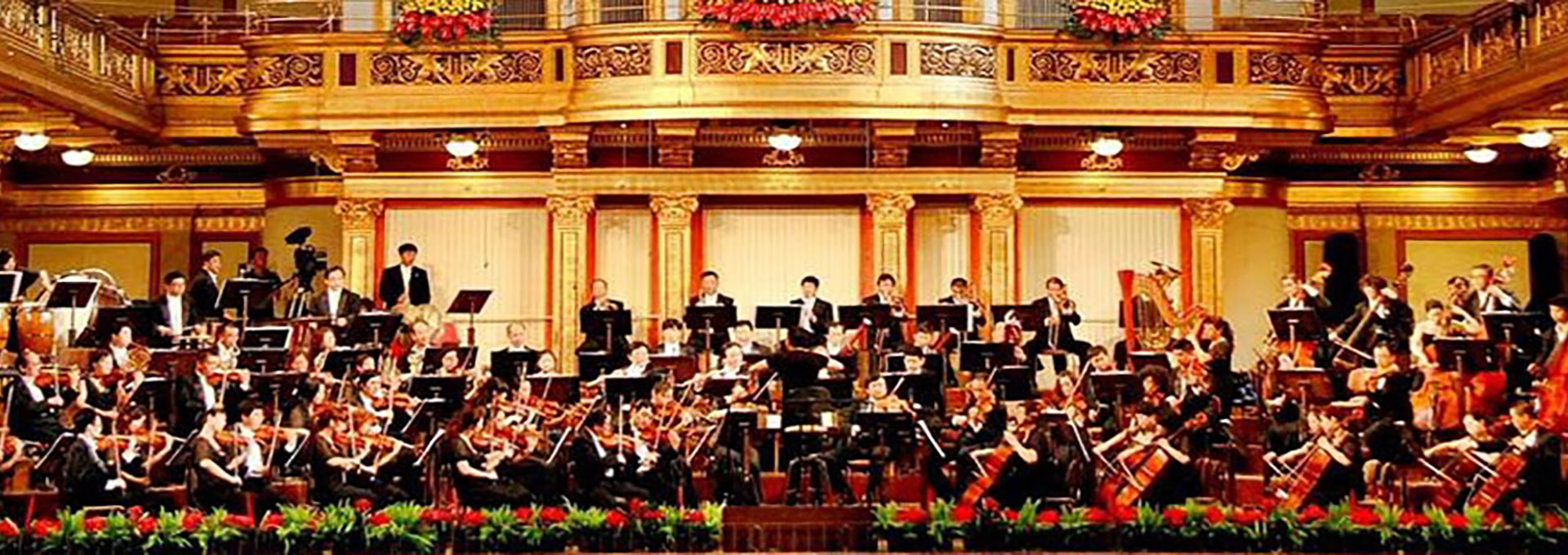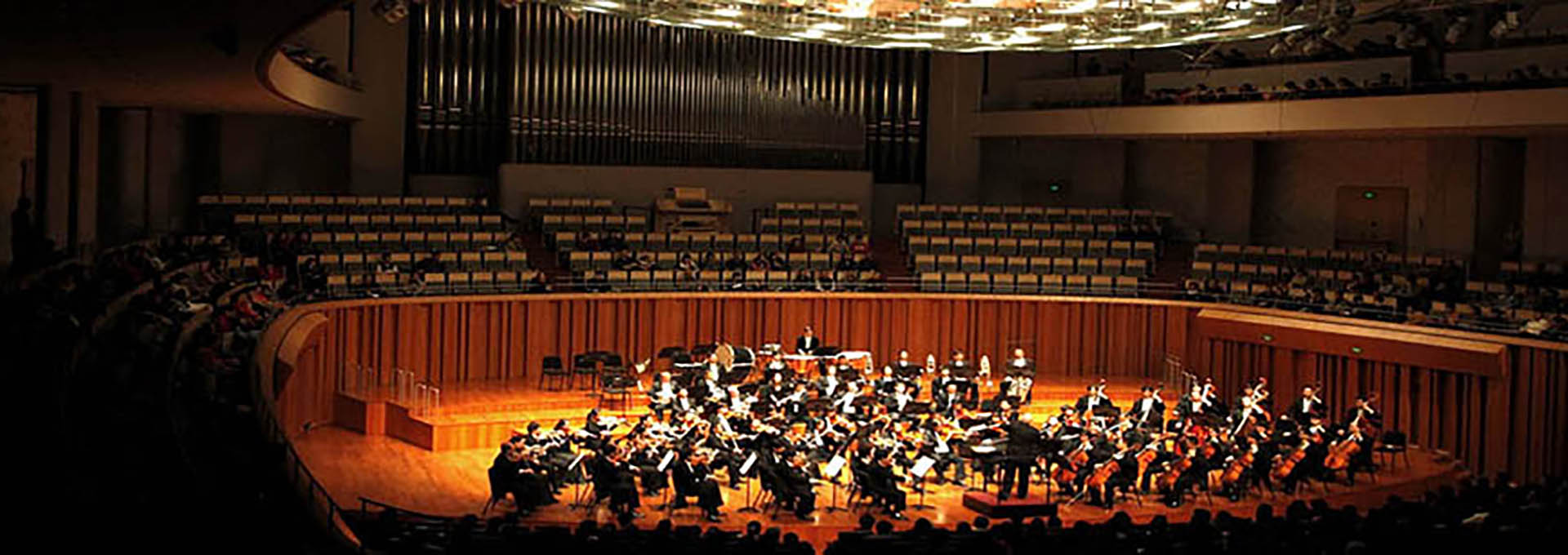中國提琴家協會組織機構
名譽會長:胡國堯 顧應龍 楊寶智
顧 問:朱亦兵 陳莉
會 長:楊依諾
副 會 長:齊廣新 謝詩堯 張正 陸江山
秘 書 長:張金鑫
副秘書長:蘭佳 周軍
理 事 長:林梓
監 事:汪石磊 常明生
理 事:31名(以下排名不分先後)
曾德銀 房美辰 武星良 陳雷 胡海蘭 吳婷婷 羅瑤 陳貴君 施亞東 冉紅俊 呂師貴
武天成 李薇 張靜 楊鵬 陳婷 胡珂 王聚芳 林映映 劉平 米磊 牛愛華 張建榮
邢秋研 謝璇 王辰予 彭海平 袁伊玉蕙 萬穎芳 胡曉光 吳欣康
協會簡介
中國提琴家協會,成立於二0一七年九月,是經過合法註冊的非盈利性社會團體。我國著名大提琴家、原中央音樂學院教授胡國堯先生、著名小提琴家,作曲家,原中央音樂學院教授楊寶智先生、著名小提琴教育家顧應龍先生擔任協會名譽會長。著名大提琴演奏家中央音樂學院教授朱亦兵先生、中國愛樂樂團小提琴演奏家陳莉女士擔任協會顧問;著名五弦琴演奏家楊依諾女士擔任會長;協會宗旨:凝聚全國以及世界各地華人華僑提琴界(小提琴、中提琴、大提琴、低音提琴)演奏家、教育家、演奏員、基層教師等開展學術交流、提升技藝、共謀發展大計。
提琴,屬於西洋弓弦樂器,由歐洲古琴「維奧拉」演變而成。 提琴家族按體積與音域分為小提琴、中提琴、大提琴和低音提琴四大類。 現代提琴誕生於十六世紀下半葉之後意大利阿瑪蒂、斯特拉第瓦利、瓜內利等為代表的著名製琴家族之手;那些近乎完美的樂器早已成為曠世佳作,稀世珍寶。
提琴是最接近於人聲的樂器,其音色優美、音域寬廣、演奏技法豐富、表現力強,是現代管弦樂和室內樂的重要組成;提琴家族樂器同宗同族、同根同源;從材料、工藝、構造、型態、發音、演奏以及日常養護等方面都十分相似。 現實中,提琴家族成員之間關系也甚為密切,比如:弦樂二重奏、弦樂四重奏、弦樂五重奏、純提琴類弦樂樂隊等等;並且在一些特殊情況下,樂隊中個別小提琴與中提琴或大提琴與低音提琴演奏員演奏角色偶爾需要變換;提琴教學也是如此。因此,專業資源整合、資源優化、資源共享是提琴發展之趨勢、之必然。
中國提琴家協會的成立,順應了時代發展趨勢;與時消息、與時偕行、與時俱進;為中國提琴界搭建了集「學術氛圍、人才薈萃、職業互動」於一體的藝術平臺;為拓寬我國提琴發展之路,構築基礎。
中國提琴家協會網站,將陸續開辦「提琴知識」、「提琴教學」、「樂譜下載」、「伴奏音樂」、「名人名曲」、「最新資訊」等圖文視聽欄目;這必將為演繹、教學及學術研究等方面提供更加廣泛內容。
中國提琴家協會誠邀海內外華人華僑提琴界精英人士加盟!並將協同其它提琴組織與社團一道,為推動和促進中國提琴藝術事業發展,實現中華民族偉大復興而不懈努力!
China Violinist Association Organizational Structure Honorary President: Hu Guoyao Gu Yinglong, Yang Baoyi Consultant: Zhu Yibing, Chen Li President: Yang Yinuo Vice Pres: Qi Guangxin, Xie Shiyao, Zhang Zheng, Qi Juren Secretary General: Qi Juren (concurrent) Dep Secretaries General: Lan Jia, Zhou Jun, Lu Jianguo Secretary: Zhang Jinxin Chairman of the Council: Lin Z Supervisor: Wang Shilei, Chang Mingsheng Council Members: 31 (listed in no particular order) Zeng Dein, Fang Meichen, Wu Xingliang, Chen Lei, Hu Hailan, Wu Tingting, Luo Yao, Chen Guijun Shi Yadong, Ran Hongjun, Lv Shigui Wu Tiancheng, Li Wei, Zhang Jing, Yang Peng, Chening, Hu Ke, Wang Jufang, Lin Yingying, Liu Ping, Mi Lei, Niu Aihua, Zhang Jianrong X Qiuyan, Xie Xuan, Wang Chenyu, Peng Haiping, Yuan Yuyue, Wan Yingfang, Hu Xiaoguang Wu Xinkang Introduction to the Association The China Violinist Association was established in September 2017 and is a nonprofit social organization registered in accordance with the law. Mr. Hu Guoyao, a famous Chinese cellist and former professor of the Central Conservatory of Music, serves as theary president of the association; Mr. Zhu Yibing, a famous cellist and professor of the Central Conservatory of Music, and Ms. Chen Li, a violin of the China Philharmonic Orchestra, serve as consultants; Ms. Yang Yinuo, a famous five-stringed instrument player, serves as the president; The purpose of the is to bring together violinists, educators, performers, and grassroots teachers from all over the country and the world's Chinese diaspora (violin, viola,o, double bass) to carry out academic exchanges, improve skills, and plan for common development. The violin, a Western stringed instrument, evolved from the ancient Europeanute "viola." The violin family is divided into four categories: violin, viola, cello, and double bass according to size and range. Modern violins were in the hands of famous violin-making families such as Amati, Stradivari, and Guarneri in the late 16th century in Italy; those nearly instruments have long since become masterpieces and rare treasures. The violin is the instrument closest to the human voice, with a beautiful timbre, wide range, rich playing, and strong expressive power. It is an important part of modern orchestral and chamber music; the instruments of the violin family share the same ancestry and origin; they are very in terms of material, craftsmanship, structure, shape, sound, performance, and daily maintenance. In reality, the relationship between the members of the violin family is also very close such as: string duet, string quartet, string quintet, pure violin string orchestra, etc.; and in some special cases, the roles of individual violin and viol or cello and double bass players in the orchestra occasionally need to be exchanged; violin teaching is the same. Therefore, professional resource integration, resource optimization, and resource sharing are the and necessities of violin development. The establishment of the China Violinist Association followed the trend of the times; it keeps pace with the times and advances with the times it has built an art platform for the Chinese violin circle that integrates "academic atmosphere, talent gathering, and professional interaction"; and it has laid the foundation for broadening the development of violin in China. The website of the China Violinist Association will gradually open "Violin Knowledge," "Violin Teaching,









